You’ll find seven developer-friendly smartwatch platforms that offer distinct advantages, from Google’s Wear OS with its 5x increase in active devices since Wear OS 3’s launch to Apple’s watchOS commanding 50% market share with premium revenue potential. HarmonyOS provides cross-device collaboration, while Tizen offers open-source flexibility and Samsung’s legacy support. Fitbit OS specializes in health applications, RTOS platforms deliver real-time processing, and proprietary brand platforms offer specialized development opportunities. Each platform’s unique strengths will shape your development strategy.
Wear OS: Google’s Comprehensive Development Ecosystem
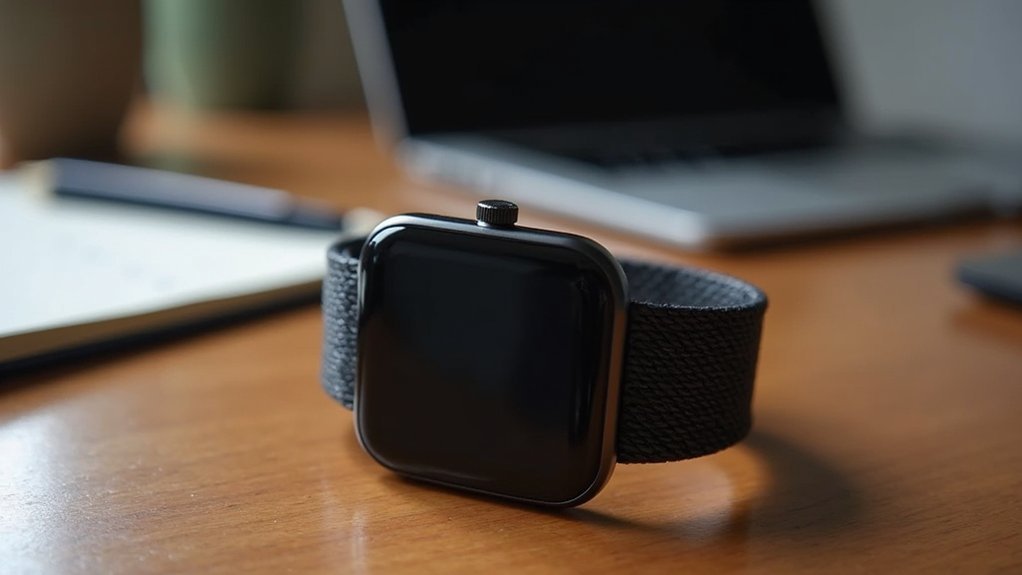
Google’s Wear OS stands as the most accessible entry point for developers looking to build smartwatch applications, thanks to its familiar Android development environment and extensive toolset.
You’ll find yourself working with Modern Android APIs and tools you already know, streamlining development across multiple device types. The platform’s Compose for Wear OS serves as your recommended declarative UI toolkit, specifically tailored for wearable interfaces.
You can leverage the Horologist project’s supplemental libraries, including media toolkits and prebuilt composables that fill common development gaps.
Testing becomes straightforward with the official Wear OS emulator in Android Studio. With the developer preview of Wear OS 6 available, you’re positioned to explore new platform features while building for the fastest-growing smartwatch platform. Active Wear OS devices have increased 5x since the Wear OS 3 launch, providing developers with an expanding user base to target.
Watchos: Apple’s Premium Developer Platform
You’ll find watchOS stands out as Apple’s premium development platform, offering the sophisticated WatchKit framework that seamlessly integrates Swift and SwiftUI for creating native Apple Watch applications.
The platform provides extensive SDK access to health sensors, fitness APIs, and ecosystem integration tools that enable your apps to communicate across iPhone, iPad, and Mac devices. Developers can create comprehensive fitness experiences with access to real-time heart rate data and gyroscope information for enhanced workout applications.
What makes watchOS particularly attractive for developers is its lucrative App Store revenue potential, as Apple Watch users typically demonstrate higher spending patterns and engagement rates compared to other smartwatch platforms.
WatchKit Development Framework
When Apple introduced WatchKit as part of the iOS 8.2 SDK in 2014, it transformed how developers approach smartwatch app creation by providing an extensive framework specifically designed for the Apple Watch’s unique constraints and capabilities.
You’ll find WatchKit seamlessly integrates with existing iOS frameworks like HealthKit and CoreData, making development efficient and familiar.
The framework centers around three core development elements:
- WKInterfaceController – Your main class for managing interface controllers, similar to UIViewController but optimized for watch displays
- Simplified Life Cycle – You’ll work with streamlined init, willActivate, and didDeactivate changes that reduce complexity
- Diverse App Components – You can create full apps, glances, notifications, and complications for thorough user experiences
WatchKit’s specialized optimization guarantees your apps perform well despite the Apple Watch’s hardware limitations. The WatchKit app itself remains lightweight by containing only storyboard files and resources while the WatchKit extension executes all intensive processing on the paired iPhone device.
App Store Revenue
Understanding WatchKit’s technical capabilities becomes even more compelling when you consider the financial opportunities awaiting developers on Apple’s platform.
Apple’s App Store generated $89.3 billion in consumer spending in 2025, nearly doubling Google Play’s ~$40 billion. You’ll benefit from Apple Watch’s commanding 50% market share and 39.8 million units sold in 2024.
You’re targeting premium users who demonstrate high spending patterns and loyalty. With 80% of iPhone users owning multiple Apple devices, you’ll tap into an ecosystem that drives repeat purchases and subscription renewals.
Apple’s strict curation enhances user trust, enabling premium pricing models and robust in-app purchases. The platform’s superior average revenue per user and lower churn rates create sustainable monetization opportunities for your WatchOS applications. Apple’s subscription services generated $53 billion in 2020, representing the company’s second largest revenue segment after iPhone sales.
HarmonyOS: Huawei’s Cross-Device Development Framework
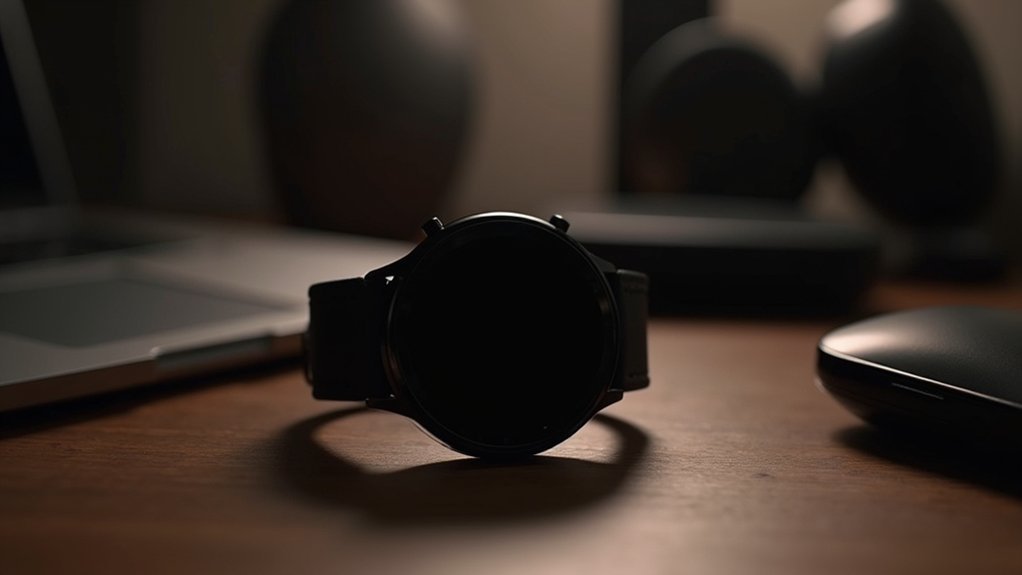
You’ll find HarmonyOS stands out as Huawei’s ambitious cross-device development framework that breaks traditional platform boundaries.
The system’s distributed architecture lets you build applications that seamlessly operate across smartphones, tablets, smartwatches, and other connected devices using unified development tools. This unified OS approach means you can write code once and deploy it across multiple device types without extensive modifications.
HarmonyOS empowers you with distributed programming capabilities that enable your apps to share resources, data, and processing power across multiple devices simultaneously.
Cross-Device Development Architecture
HarmonyOS fundamentally changes how you approach cross-device development by providing a unified architecture that spans multiple device types rather than forcing you to build separate applications for each platform.
You’ll work within a structured three-layer system consisting of the system service layer, framework layer, and application layer. This architecture supports multiple programming languages, enhancing your development flexibility across devices. The distributed collaboration framework automatically establishes connections between devices, eliminating complex networking code.
Key architectural benefits include:
- “Develop Once, Deploy Everywhere” approach that dramatically reduces your development cycle
- Real-time multi-process kernel providing quick start-up and efficient resource management
- Hardware virtualization capabilities allowing easier control of resources like cameras across connected devices
This unified approach streamlines your workflow while maintaining performance across smartwatches, phones, and tablets. The framework also provides community engagement features that connect you with other developers for troubleshooting and sharing best practices.
HarmonyOS Developer Tools
When building HarmonyOS applications, you’ll rely on a thorough suite of developer tools that streamline the entire development process from coding to deployment.
DevEco Studio serves as your primary IDE, offering extensive code editing and system resource profiling capabilities. You’ll find it supports C/C++ development and runs on both Windows 10 and Ubuntu systems. The IDE includes debugging options that allow you to test applications using either an emulator or a real device.
For device-specific development, DevEco Device Tool provides component customization, compilation, programming, and visual debugging features.
You’ll need at least 8GB RAM and 100GB disk space on Windows, or 4GB RAM on Ubuntu with 1280×800 screen resolution.
The platform includes specialized kits like ArkUI for interface design, ArkData for data management, Ability Kit for app capabilities, Background Tasks Kit, and Camera Kit for multimedia integration.
Distributed Programming Capabilities
Beyond the foundational development tools, HarmonyOS’s distributed programming framework enables you to create applications that seamlessly operate across multiple connected devices.
You’ll leverage cross-device service collaboration that automatically establishes links between smartwatches, phones, and tablets without manual configuration.
The distributed architecture lets you:
- Reuse UI and service logic across different devices during development, reducing code duplication and maintenance overhead
- Virtualize hardware resources like cameras and sensors, giving you programmatic control over device capabilities from remote applications
- Deploy applications with minimal modifications across multiple device types through the multi-process isolation framework
You’ll benefit from secure data exchange between devices while maintaining performance efficiency. The framework enables tablets to utilize camera functions of connected phones for enhanced document creation workflows.
The real-time kernel guarantees your distributed applications start quickly and operate smoothly across the entire device ecosystem.
Tizen: Samsung’s Legacy Platform for Custom Applications

Samsung’s Tizen OS stands out as a compelling open-source platform that’s built developer accessibility into its core design from the ground up.
Samsung’s Tizen OS delivers exceptional developer accessibility through its thoughtfully designed open-source architecture and comprehensive development tools.
You’ll find it’s hosted by the Linux Foundation, making contributions and custom app development straightforward for any developer. The platform’s lightweight architecture supports fast boot times while delivering powerful mobile features in compact smartwatch form factors.
You can leverage Tizen’s extensive SDK for both native and web application development, using C, C++, HTML5, and JavaScript.
The development environment includes debugging, emulation, and profiling tools that streamline your workflow. You’ll also access voice assistant APIs compatible with Bixby, Alexa, and Google Assistant.
Tizen Studio provides an integrated development environment with comprehensive tools including emulator, package manager, device manager, and dynamic analyzer for comfortable application development.
Though Samsung’s shifting to Wear OS, Tizen’s developer-friendly innovations continue influencing smartwatch platforms.
Fitbit OS: Health-Focused Development Environment
Since health and fitness applications demand specialized development tools, Fitbit OS delivers a uniquely focused environment that’s built around thorough health data access.
You’ll work exclusively through Fitbit Studio, an online IDE that provides everything you need for wearable app development.
The platform’s strength lies in its extensive health-focused capabilities:
- Rich Sensor Integration – You’ll access accelerometer and heart rate monitor data directly through the SDK, enabling precise fitness tracking and custom health metrics.
- Seamless Data Synchronization – Your apps can communicate with mobile devices through messaging and file transfer APIs, ensuring smooth data flow between wearable and smartphone.
- Extensive Web API Access – You’ll integrate with Fitbit’s RESTful API to read and write sleep, steps, and other health data while maintaining user privacy controls.
The platform encourages community feedback through their developer forum, where you can influence API enhancements and share innovative use cases with other developers.
RTOS Platforms: Real-Time Systems for Advanced Customization
When you need maximum control over your smartwatch’s performance and behavior, RTOS platforms deliver the real-time processing capabilities that standard operating systems can’t match.
You’ll find RTOS excels in lightweight, power-efficient environments where precise timing matters most. Brands like Amazefit and Xiaomi leverage RTOS to create affordable smartwatches with customized interfaces and unique features.
FreeRTOS stands out as the most popular choice, offering flexible development frameworks for concurrent task management. You can build projects with multiple features like heart rate monitoring, alarms, and sensor data processing. RTOS technology has proven reliable in critical applications including pacemakers and RADAR systems.
While you’ll enjoy superior battery life and fast task execution, you’ll face limited app support compared to platforms like Wear OS. RTOS suits developers prioritizing hardware customization over extensive app ecosystems.
Proprietary Brand Platforms: Specialized Development Opportunities
While RTOS platforms offer raw control and customization, proprietary brand platforms provide you with specialized development environments tailored to specific hardware ecosystems.
These platforms deliver unique advantages through their tightly integrated architectures and exclusive toolsets.
You’ll find distinct opportunities across different proprietary systems:
- watchOS Development – Access Apple’s exclusive App Store ecosystem with S-series chip optimization, seamless iPhone integration, and upcoming AI-driven health features that leverage the closed ecosystem’s security advantages.
- HarmonyOS Innovation – Tap into Huawei’s expanding AppGallery with cross-device connectivity, AI-enabled performance enhancements, and efficient Kirin chip integration, though you’ll navigate limited Google services.
- Specialized Fitness Platforms – Develop for Garmin OS’s advanced sports analytics or Fitbit OS’s thorough health monitoring with extended battery optimization. Tizen for Wearables offers standalone app capabilities that run independently without requiring smartphone connectivity.
Frequently Asked Questions
Which Smartwatch OS Offers the Fastest App Approval Process for Developers?
You’ll find Wear OS offers the fastest app approval process, typically taking just hours to two days through Google Play Store’s automated systems, compared to watchOS’s week-long manual reviews.
Can Developers Monetize Apps Equally Across All Smartwatch Platforms?
You can’t monetize apps equally across all smartwatch platforms. Apple WatchOS and Wear OS offer robust monetization through established app stores, while smaller platforms like Fitbit OS provide limited revenue opportunities.
What Are the Typical Development Costs for Each Smartwatch OS Platform?
You’ll spend $10,000-$15,000 for basic apps across watchOS, Wear OS, HarmonyOS, Connect IQ, and Fitbit OS. Complex apps with GPS and health tracking cost $20,000-$50,000, with multi-platform development increasing expenses considerably.
Which Platforms Support Cross-Platform App Development Tools and Frameworks?
You can use cross-platform tools like Flutter and React Native for smartwatch development, though they’re not natively supported. Wear OS supports Android Studio with Kotlin, while WatchOS uses Xcode with Swift primarily.
How Do Licensing Fees Compare Between Different Smartwatch Operating Systems?
You’ll find watchOS charges $99 annually for development, while Wear OS requires only $25 once. Fitbit OS and custom platforms don’t charge developer fees, but watchOS and Wear OS offer considerably larger app ecosystems.
In Summary
You’ve got excellent options whether you’re targeting mainstream consumers or niche markets. Choose Wear OS or WatchOS if you want broad reach and robust tools. Consider HarmonyOS for IoT integration or Tizen for Samsung’s ecosystem. Fitbit OS works perfectly for health-focused apps, while RTOS platforms give you complete control. Don’t overlook proprietary systems—they often offer unique features and less competition for your innovative smartwatch applications.

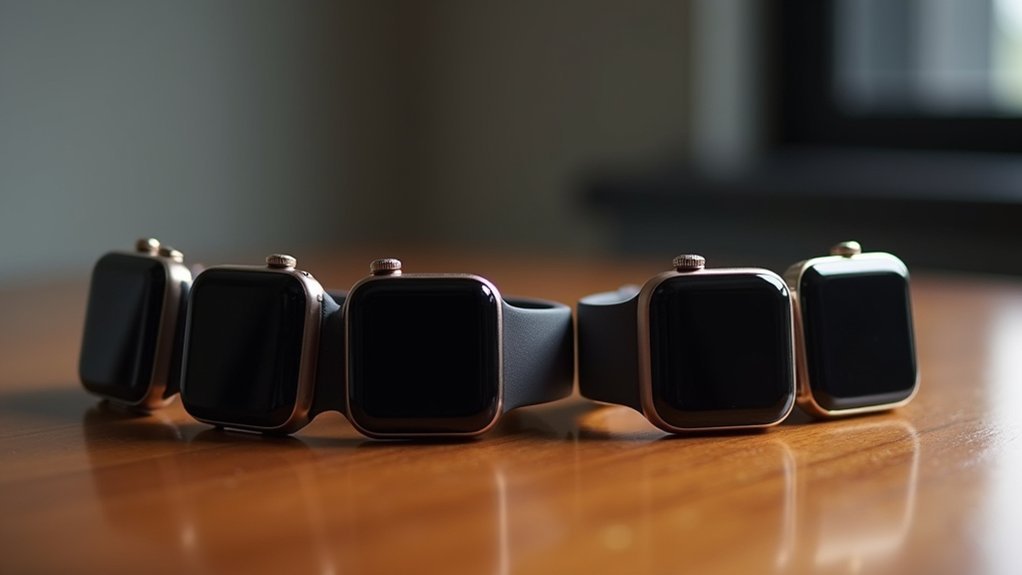
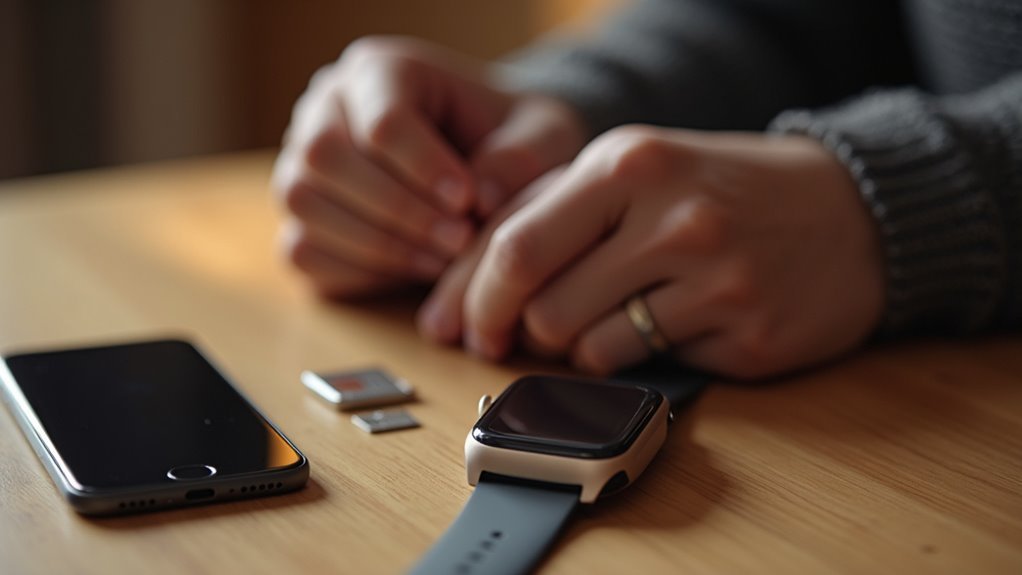

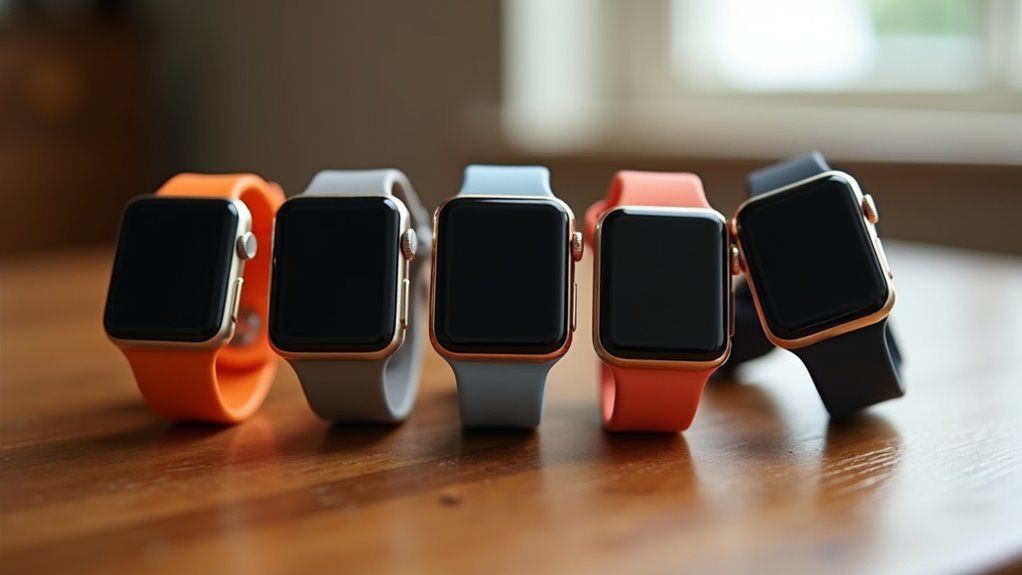
Leave a Reply